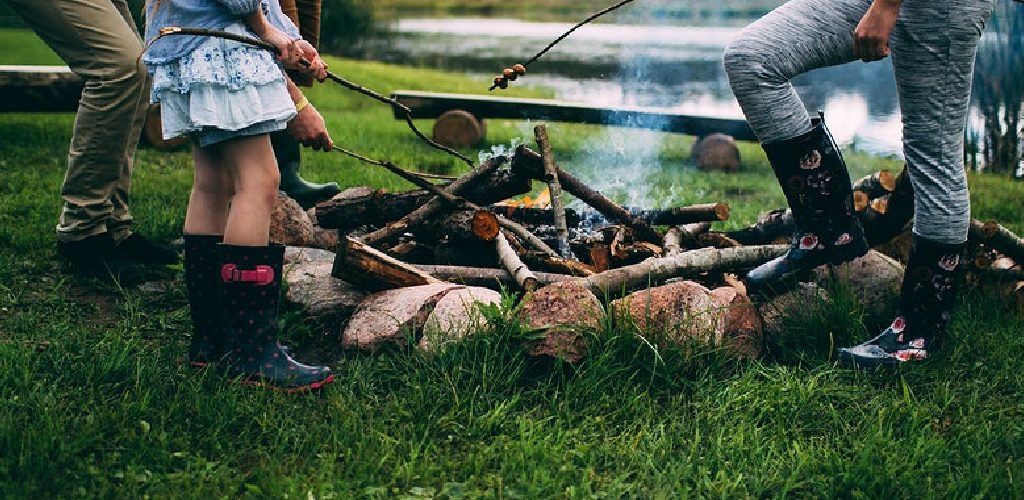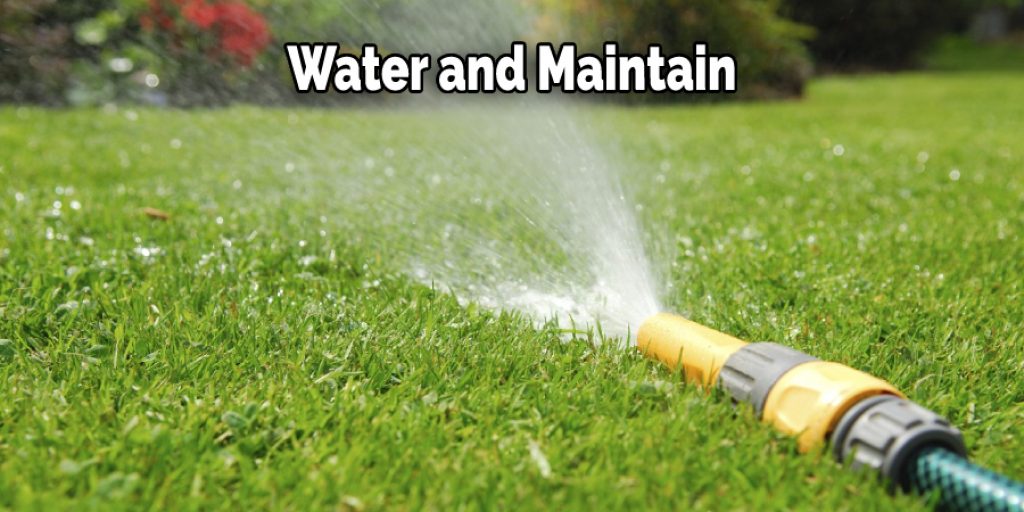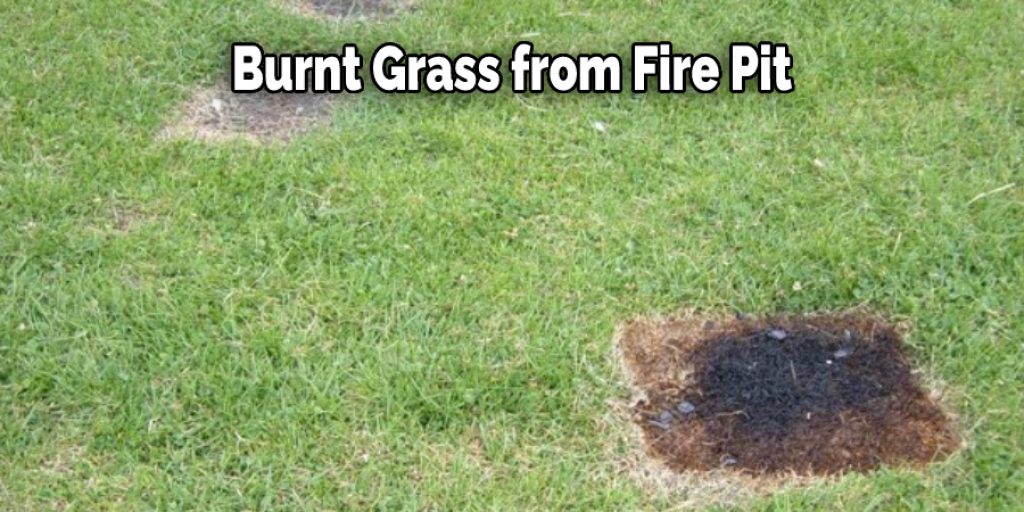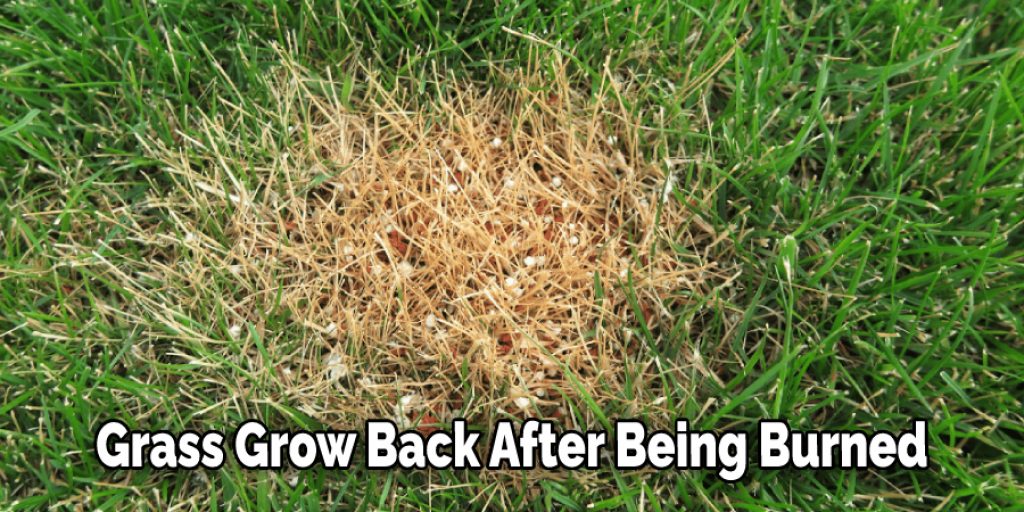A backyard fire pit is a perfect way to spend a summer evening. But if your grass is scorched from all the heat, don’t worry – there are ways to fix it. Read on for tips on how to fix burnt grass from fire pit.

Summary: If you’ve had trouble getting your grass to grow back after a fire pit BBQ, here’s how to fix it. Fill a bucket with water and pour it over the burned area. Let it sit for a few minutes, then drain off the water. Pour a gallon of white vinegar over the area and sprinkle some salt on top. Let the vinegar and salt sit for an hour, then rinse the area off.
What Is Burnt Grass from Fire Pit?
Burnt grass from a fire pit can be a problem for your lawn. The first thing you need to do is assess the damage. If the entire lawn is blackened, you may need to start over. However, if only a small area is affected, you can take steps to repair the damage.
One way to do this is to top-dress the area with compost or topsoil. This will help replenish the soil’s nutrients and encourage new growth. Another option is to seed the area with grass seed. This will give the grass a chance to fill in any bare patches. You can restore your lawn to its former glory with some time and effort.
Why It’s Important to Fix Burnt Grass from Fire Pit?
A healthy lawn is important because it helps to protect the soil and provides a space for recreation.
The grass can be damaged if there is a fire, whether from a bonfire, fireworks, or a cigarette. The high temperatures from the fire can make the blades of grass turn brown and black, and the roots of the grass can be killed.
If your grass gets burnt, it’s important to fix it right away. You can do this by seed or sodding the area and giving it time to regrow. This will help your lawn recover from fire damage and prevent long-term damage to your landscaping.
How to Fix Burnt Grass from Fire Pit Step by Step Guide
Step 1: Assess the Damage
Before attempting to fix burnt grass from a fire pit, assess the extent of the damage. Walk around the affected area to determine the size and severity of the burnt grass. This will help you decide on the best course of action and materials needed for the repair.
Step 2: Remove Debris
Remove any debris from the burnt area, including ashes, burnt wood, and stones. Use a rake or a broom to gently sweep away the debris, taking care not to damage the surrounding healthy grass.
Step 3: Section Off the Damaged Area
Using a shovel or a garden edger, section off the damaged area by creating a border around the burnt grass. This will help you focus on the affected area and prevent the spread of burnt grass to healthy grass during the repair process.
Step 4: Remove the Burnt Grass
Using a shovel or a garden trowel, carefully remove the burnt grass and the top layer of soil beneath it. Be sure to dig deep enough to remove the entire root system of the burnt grass, but avoid digging too deep, as this can damage the healthy grass nearby. Place the removed grass and soil in a wheelbarrow or a garden cart for disposal.
Step 5: Loosen the Soil
After removing the burnt grass, use a garden fork or a tiller to loosen the soil in the affected area. This will help promote aeration and ensure a healthy environment for new grass seed to grow.
Step 6: Amend the Soil
Add a layer of organic matter, such as compost or aged manure, to the soil in the affected area. This will help improve the soil’s nutrient content, structure, and water retention, providing an ideal environment for new grass to grow. Mix the organic matter into the existing soil using a garden fork or tiller.
Step 7: Level the Soil
Use a rake to level the soil in the affected area, ensuring that it is even with the surrounding healthy grass. This will help prevent low spots or uneven growth when the new grass begins to grow.
Step 8: Choose the Right Grass Seed
Select a grass seed that matches the existing grass species in your lawn. This will help ensure a consistent appearance and growth pattern. If you are unsure of the grass species, consult with a local nursery or garden center for advice.
Step 9: Seed the Affected Area
Evenly spread the grass seed over the affected area, following the recommended seeding rate provided on the seed packaging. To promote even coverage, use a hand-held broadcast spreader or manually spread the seed using a gentle sweeping motion.
Step 10: Cover the Seed
Lightly cover the newly seeded area with a thin layer of organic matter, such as compost or peat moss. This will help retain moisture and protect the grass seed from birds and other potential threats.
Step 11: Water the Seeded Area
Thoroughly water the seeded area, ensuring that the soil remains consistently moist but not saturated. Continue to water the area daily or as needed, based on the weather conditions and moisture level of the soil.
Step 12: Monitor the Growth
Regularly monitor the growth of the new grass, checking for signs of germination and healthy growth. Avoid walking or placing any objects on the newly seeded area until the grass has reached a height of at least 3 inches.
Step 13: Mow the New Grass
Once the new grass has reached a height of approximately 3 to 4 inches, it is ready for its first mowing. Use a sharp, well-maintained lawn mower to trim the grass to a height of about 2 to 2.5 inches. Be sure to mow the surrounding healthy grass at the same height to ensure a consistent appearance.
Step 14: Fertilize the Grass
After the new grass has been mowed several times, fertilize the entire lawn to promote healthy growth and fill in any remaining patchy areas. Choose a fertilizer that matches the needs of the existing grass species and follow the manufacturer’s instructions for application.
Step 15: Prevent Future Burnt Grass
To prevent future burnt grass from a fire pit, consider relocating the fire pit to a non-grass area or using a fire pit pad to protect the grass. Also, avoid using fire accelerants, such as gasoline or lighter fluid, which can cause excessive heat and damage to the grass.
Step 16: Maintain Your Lawn
Maintaining a healthy lawn through regular watering, fertilization, and proper mowing practices can help prevent damage from fire pits and other potential threats. Be sure to follow recommended lawn care practices for your specific grass species and climate.
Step 17: Consult with a Professional
If you’re unsure about how to repair burnt grass from a fire pit, consider consulting with a professional lawn care service or landscaper. They can provide expert guidance and assistance, ensuring a successful repair and healthy lawn.
Step 18: Address Other Lawn Damage
If the burnt grass is part of a larger lawn damage issue, such as pests or disease, address the underlying issue before attempting to repair the burnt grass. Failure to address the underlying issue may result in further lawn damage and additional repair costs.
Step 19: Be Patient
Repairing burnt grass from a fire pit is a process that requires patience and attention to detail. The new grass will take time to grow and fill in the damaged area, so it’s important to be patient and allow the grass to develop naturally.
Step 20: Enjoy Your Healthy Lawn
After successfully repairing the burnt grass, enjoy your healthy lawn and continue to maintain it through regular care and maintenance. A well-maintained lawn can provide numerous benefits, including aesthetic appeal, environmental benefits, and increased property value.
By following these steps, you can effectively repair burnt grass from a fire pit and restore the beauty and health of your lawn. Proper preparation, soil amendment, and seed selection are essential factors in promoting healthy grass growth. Regular lawn maintenance and preventative measures can help prevent future damage and ensure a beautiful, healthy lawn for years to come.
How Do You Fix Burnt Grass?
Step 1: Check Your Grass Roots
The first step is to check how deep the burn damage goes. If it’s only superficial, the grass will likely grow back. But if the roots are damaged, you’ll need to take action to help your lawn recover.
Step 2: Water and Keep Watering
Water is the key to helping your grass heal. The next step is to water the entire area that was burned deeply. This will help to rehydrate the roots and start the healing process. You should continue to water the area every day for at least a week or until you see new growth.
Step 3: Reassess Your Roots
If the top layer of your grass is dead, it’s time to check the roots. Look for brown, mushy, or blackened roots. If more than 50% of the roots are damaged, your grass may be beyond repair.
Step 4: Rake and Till the Affected Areas
Use a rake to remove any dead grass, debris, or rocks from the affected areas. This will help to aerate the soil and encourage new growth. If the damage is extensive, you may need to till the entire area to 3-4 inches.
Step 5: Re-Sod or Reseed
Once you’ve prepared the soil, you can re-sod or reseed the area. If you choose to sod, select a grass that is tolerant to heat and drought. If you’re reseeding, use a quality seed mix designed for your climate.

Step 6: Fertilize
After your grass has started to grow, you can help it thrive with a little fertilizer. Use a lawn fertilizer that is high in nitrogen, and apply it according to the manufacturer’s directions.
Step 7: Water and Maintain
To keep your new grass healthy, you’ll need to water it regularly and maintain it well. Also, be sure to mow it regularly and remove any dead or dying grass. Your lawn will soon be back to its green self with a little care.
Step 8: Preventative Care
The best way to avoid burn damage is to take preventive measures. If you live in an area prone to wildfires, make sure your grass is drought-tolerant and well-watered. You should also create a buffer zone around your home by clearing away any dead vegetation. And finally, be sure to use a fire pit screen to help protect your grass from sparks.
By following these steps, you can fix burnt grass and help your lawn recover. With a little time and care, your lawn will be green and healthy. Keep reading for more information about how to fix burnt grass from fire pit.
What to Do if Your Grass Is Burnt from A Fire Pit?
Whether you’re roasting marshmallows with the kids or enjoying a glass of wine around the fire, a backyard fire pit can be a great addition to any outdoor space. However, if not used properly, a fire pit can cause damage to your lawn. If your grass is burnt from a fire pit, there are a few steps you can take to repair the damage.
First, remove any debris or ashes left on the grass. Then, use a garden hose to water the area lightly. Next, apply a thin layer of topsoil to the affected area and seed it with grass seed. Finally, water the area regularly and keep it free of debris to help the new grass grow. Your lawn will soon look good as new with some time and care.
How to Prevent Your Grass from Being Burnt in The Future
Summer is a great time to enjoy the outdoors, but it can also be tough on your lawn. The hot sun and dry weather can quickly lead to brown, brittle grass. Fortunately, there are a few simple things you can do to protect your lawn from the heat.

First, make sure to mow your grass at the correct height. Taller grass has deeper roots, which helps it withstand heat and drought better than shorter grass. Second, water your lawn deeply and less often. This encourages your grass to develop deeper roots, which will help it to survive periods of drought.
Finally, fertilize your lawn regularly. A healthy lawn is more resistant to the effects of the sun and heat. By following these simple tips, you can keep your grass green and healthy all summer long. If you want to know more about how to fix burnt grass from fire pit, keep reading.
Frequently Asked Question
Will Grass Grow Back After Being Burned?
Yes, grass will grow back after being burned as long as the soil is still healthy. However, if the soil is not healthy, the grass may not grow back.
Will Watering Help Burnt Grass?
Watering the burnt grass may help to revive it. However, if the grass is severely burnt, it may not be able to be saved.
Does Burning Dead Grass Help?
There is no definitive answer to this question. Some people believe that burning dead grass can help revive a fire pit area that has been burned, while others think it can make the situation worse. Ultimately, it is up to the individual to decide whether or not to attempt this method.

How Long Does It Take for Grass to Grow Back After Fire?
It can take up to a year for grass to grow back after being burnt. The best way to help the process is to keep the area around the fire pit clear of debris and water regularly. Once the grass starts to grow back, be sure to fertilize it to be strong and healthy.
Is Burning Grass Toxic?
No, burning grass is not toxic. However, if there is an excessive amount of ash and soot left on the grass after the fire has been put out, it can cause the grass’s discoloration or even death.
Conclusion
If you’ve just finished a bonfire and are looking at burnt grass, don’t worry! There are ways to fix it. Follow our simple guide on how to revive burnt grass and have your lawn back to its former glory in no time. Thanks for reading our post about how to fix burnt grass from fire pit.
You can check it out to Fix Crystallized Maple Syrup
